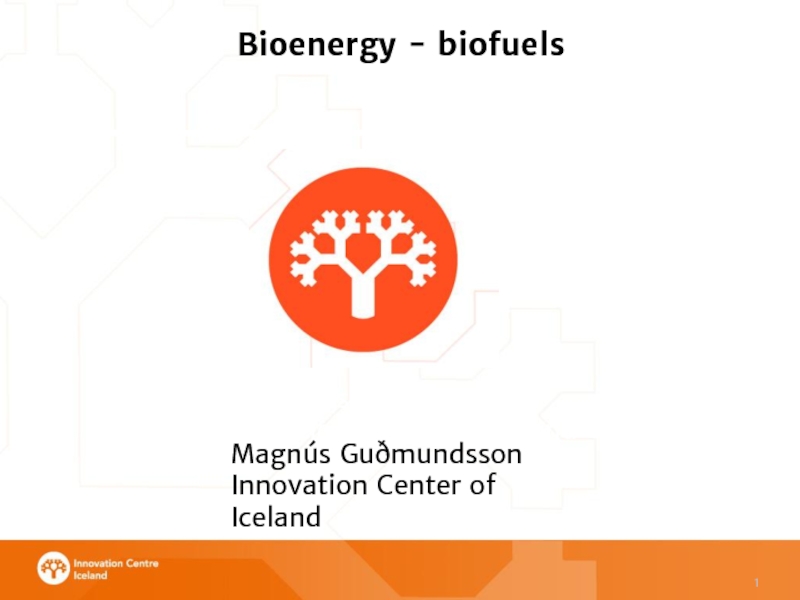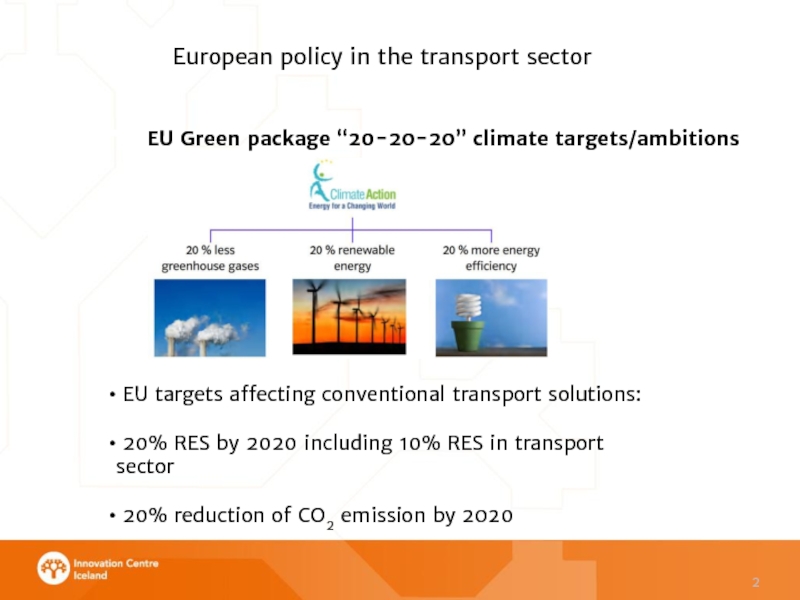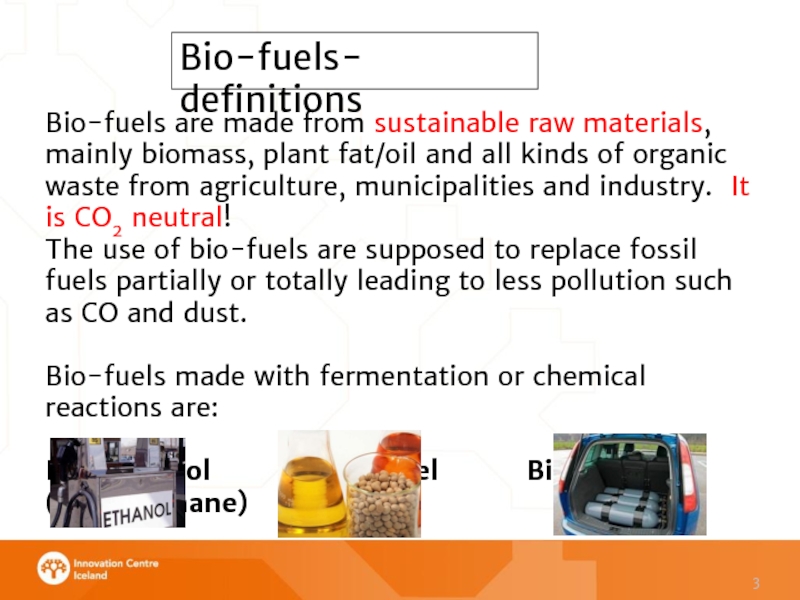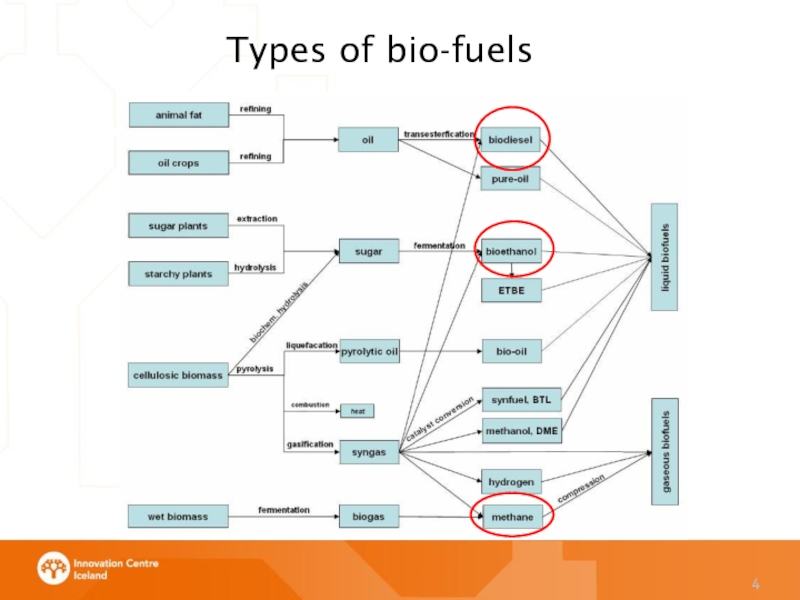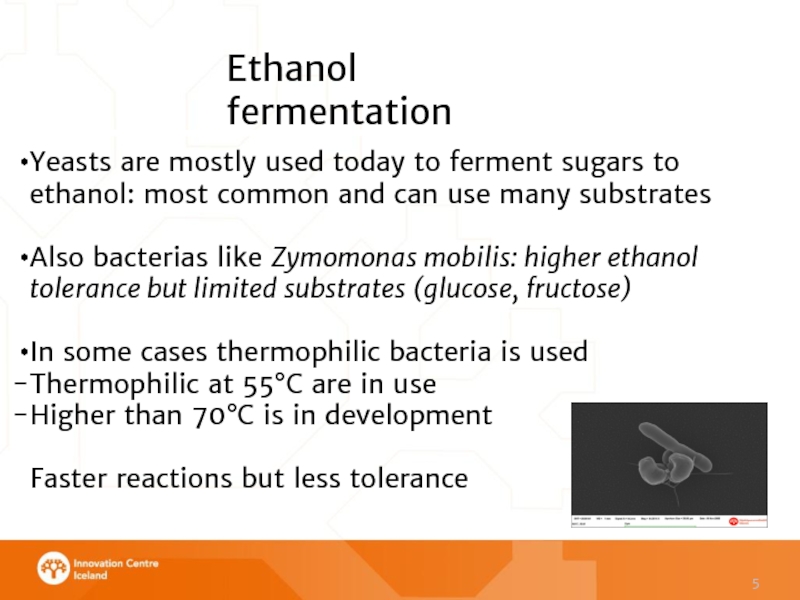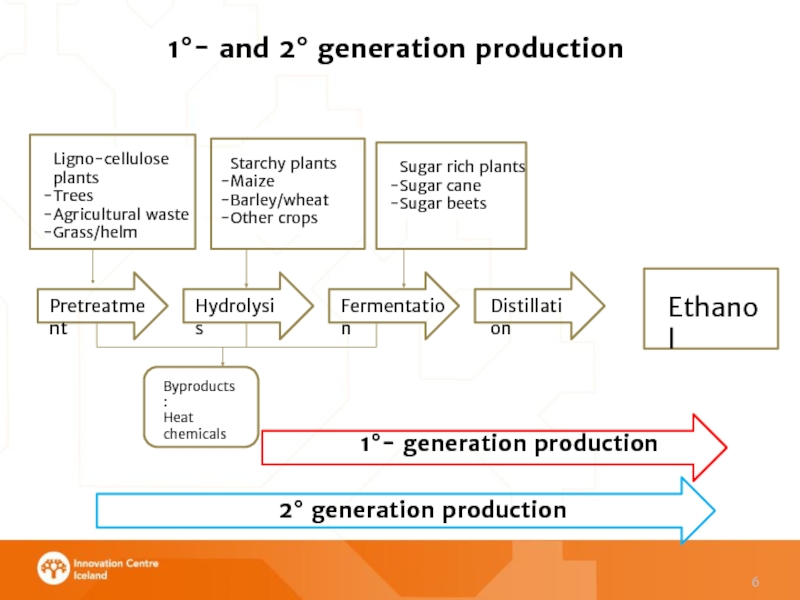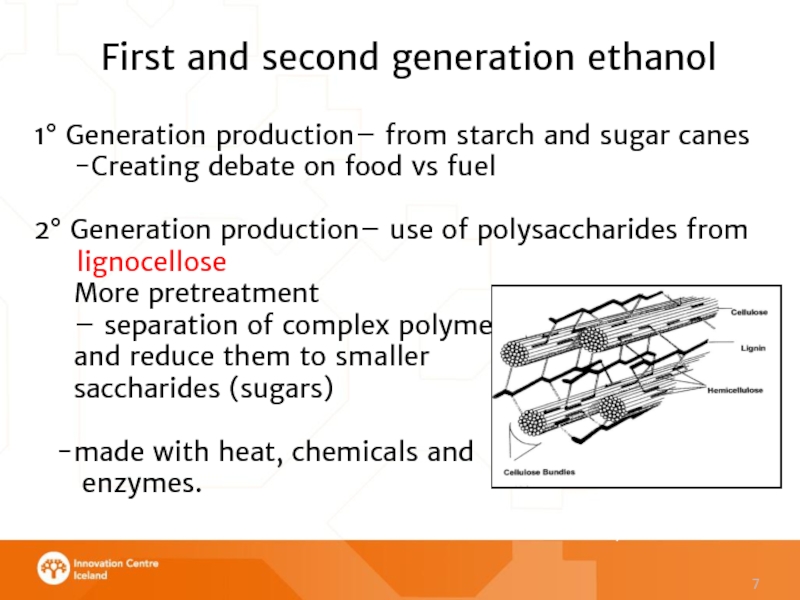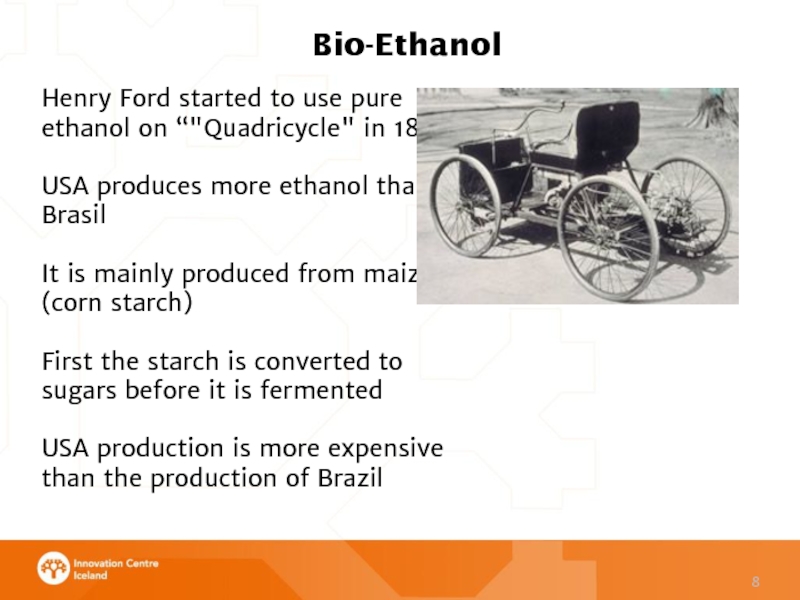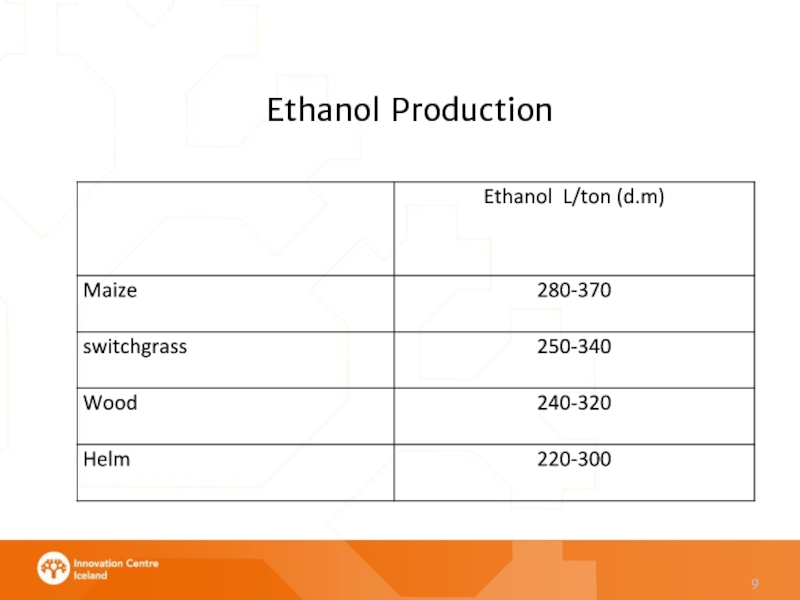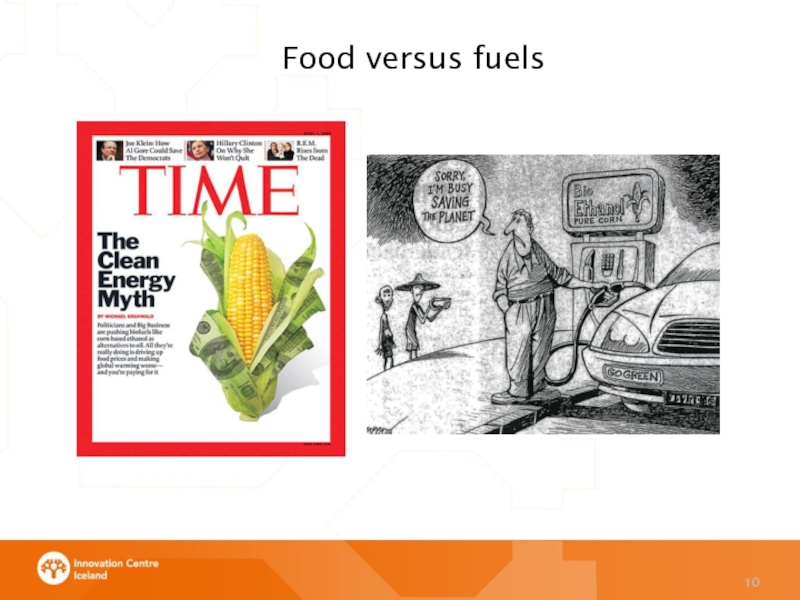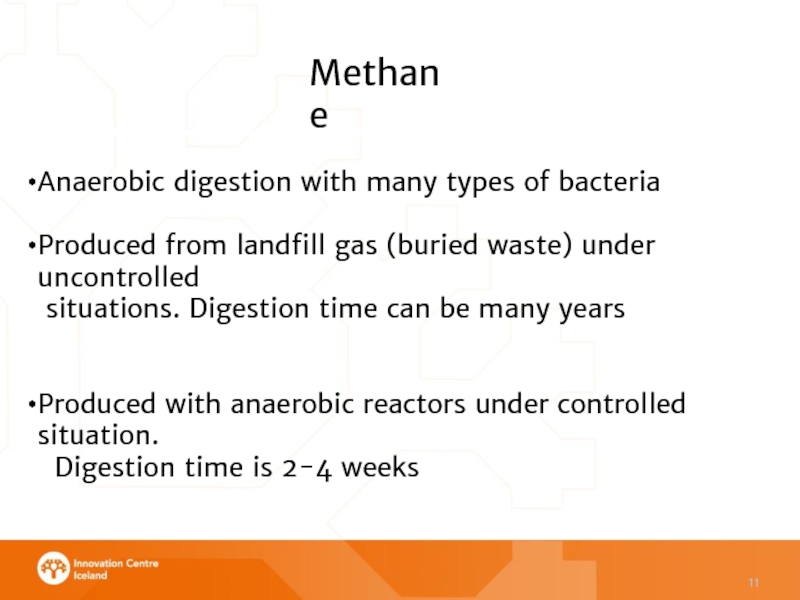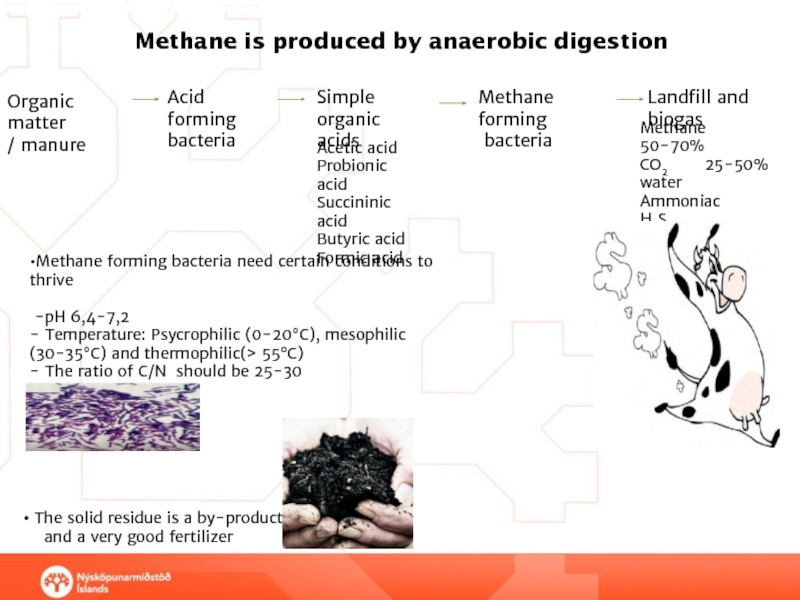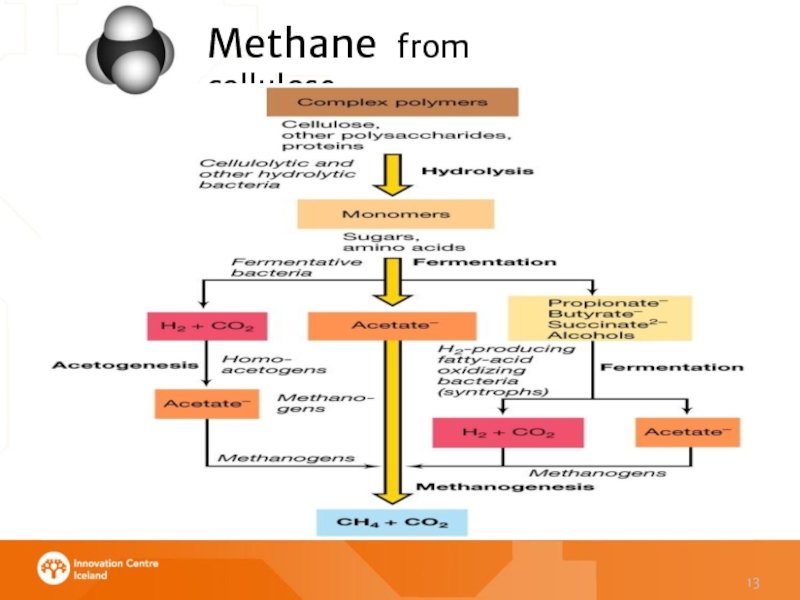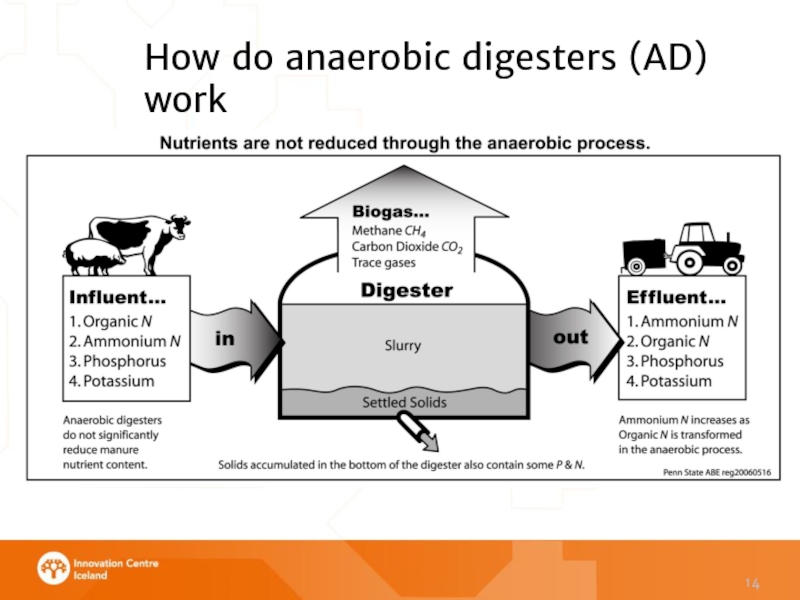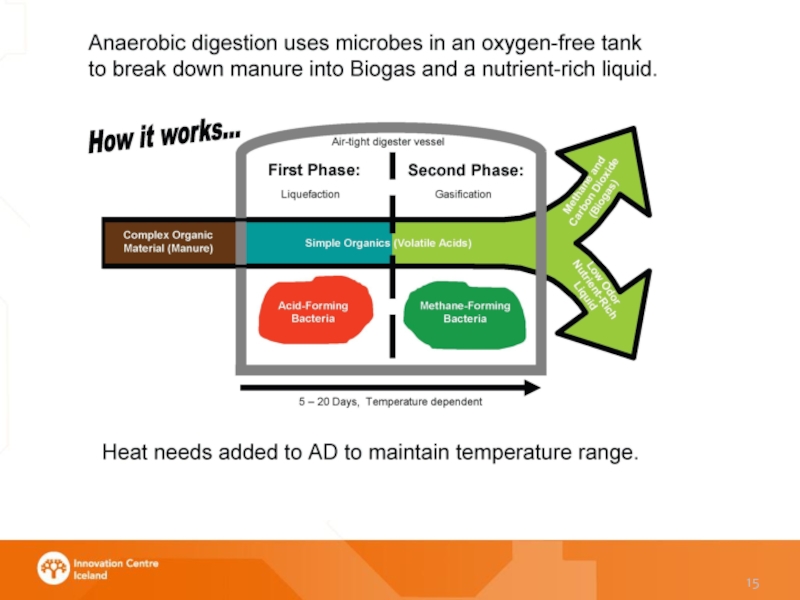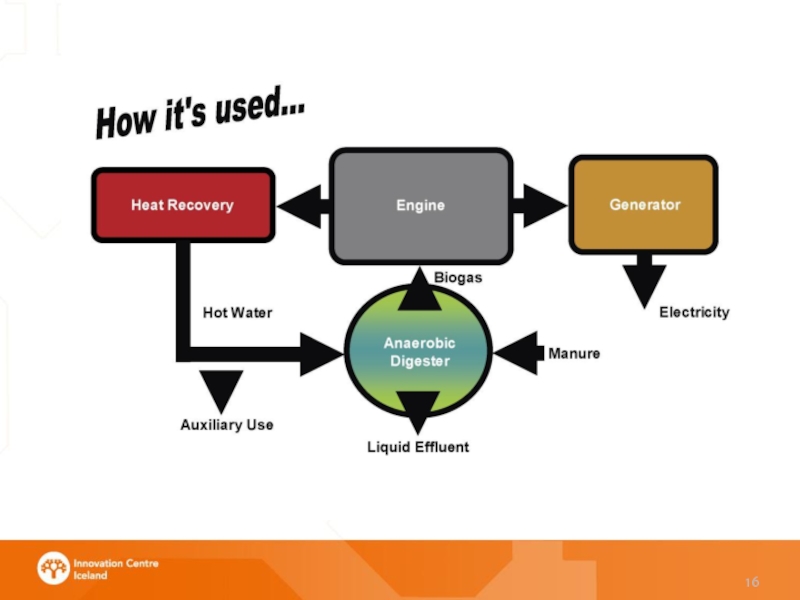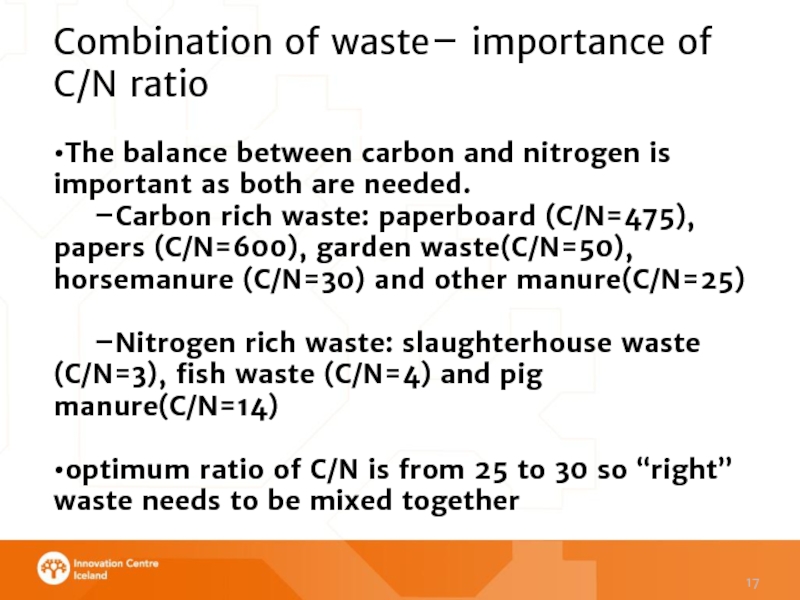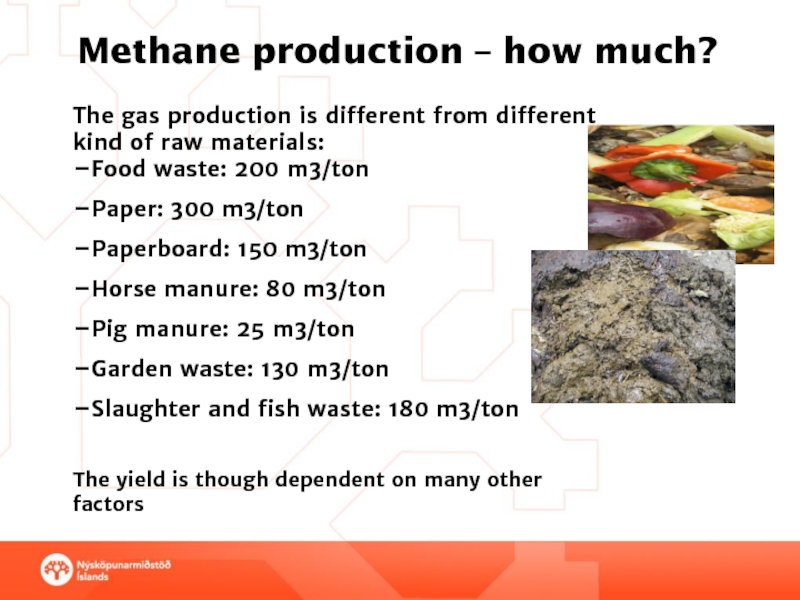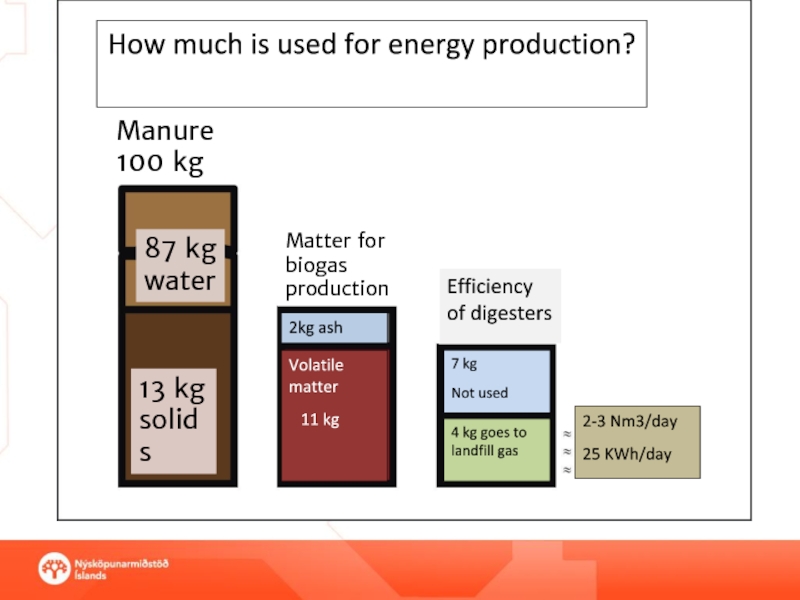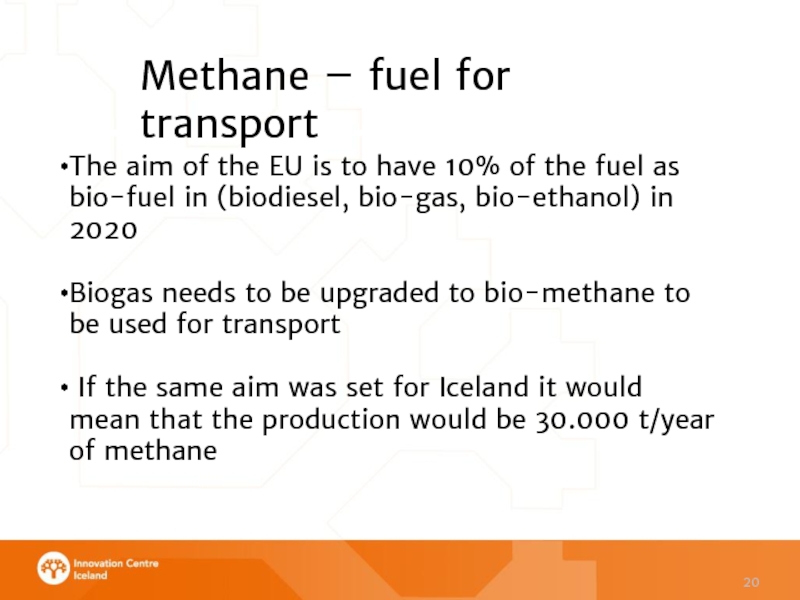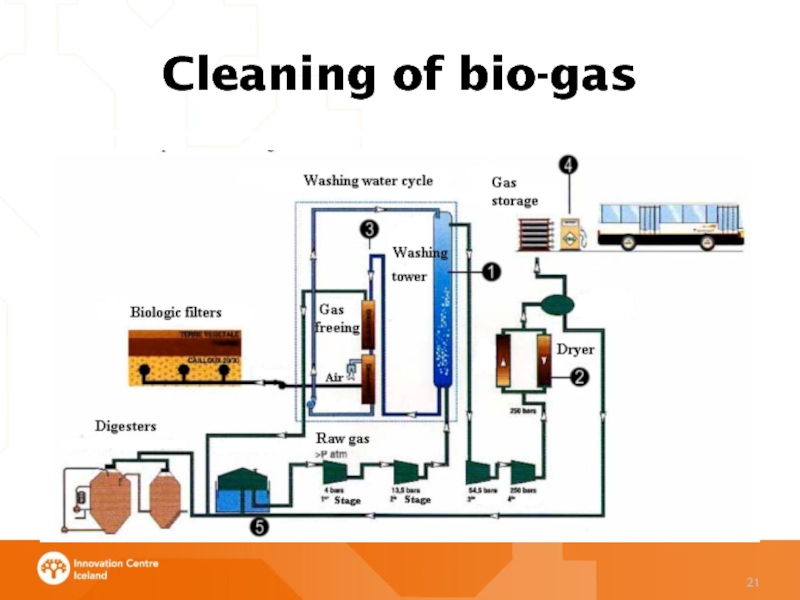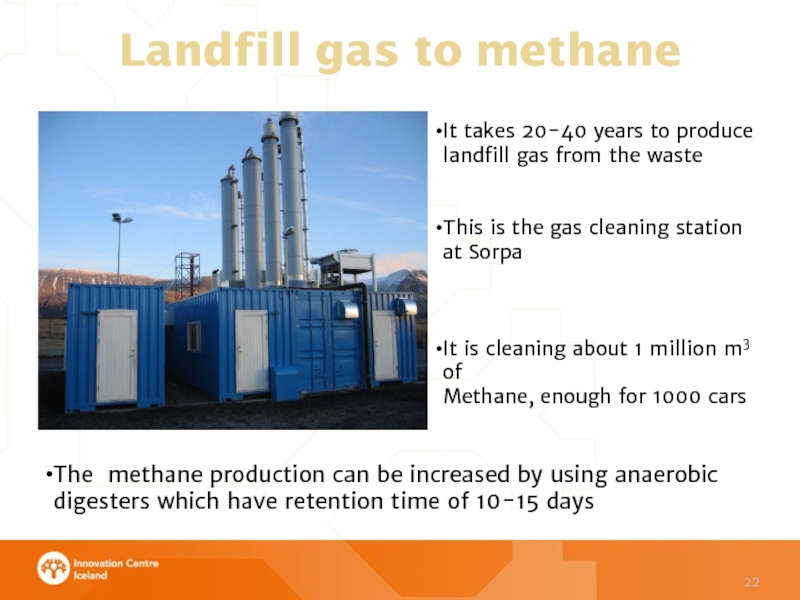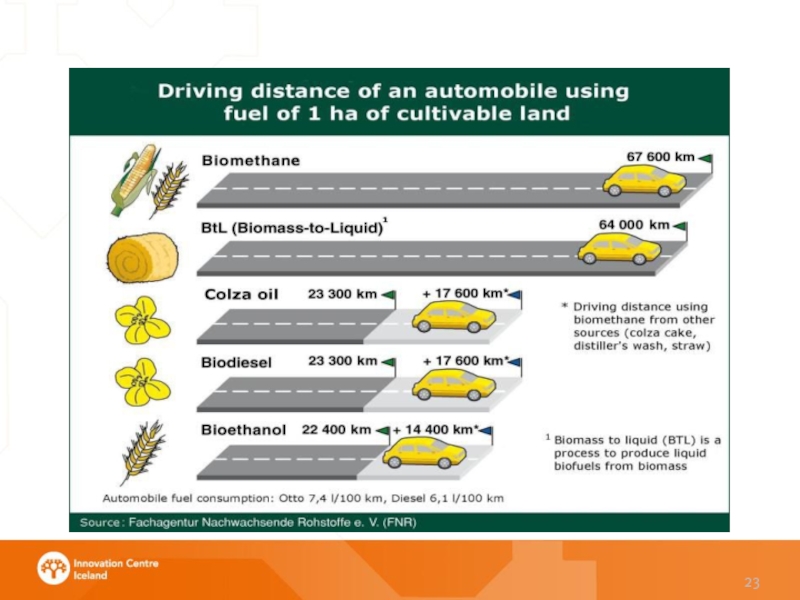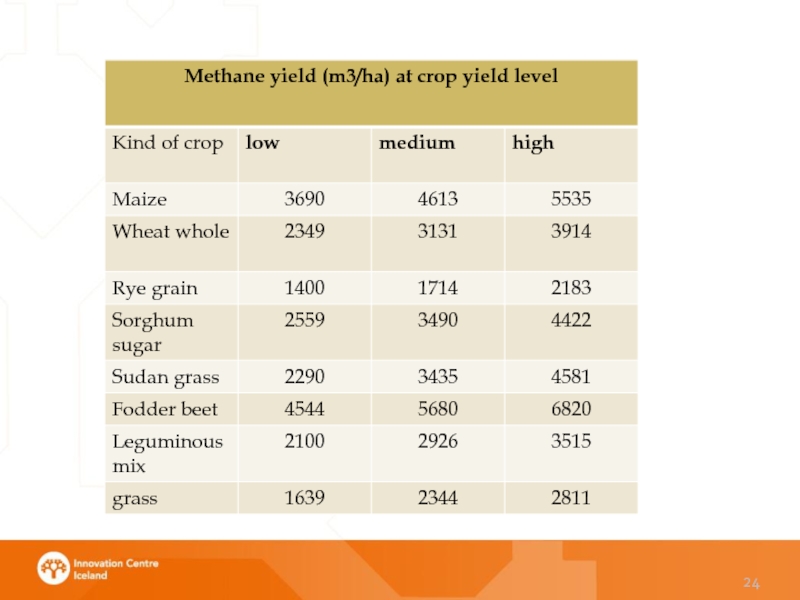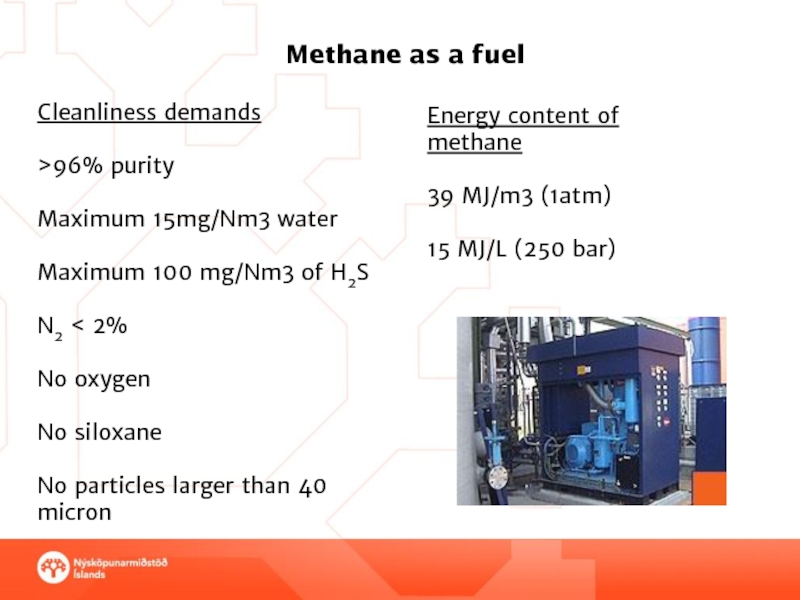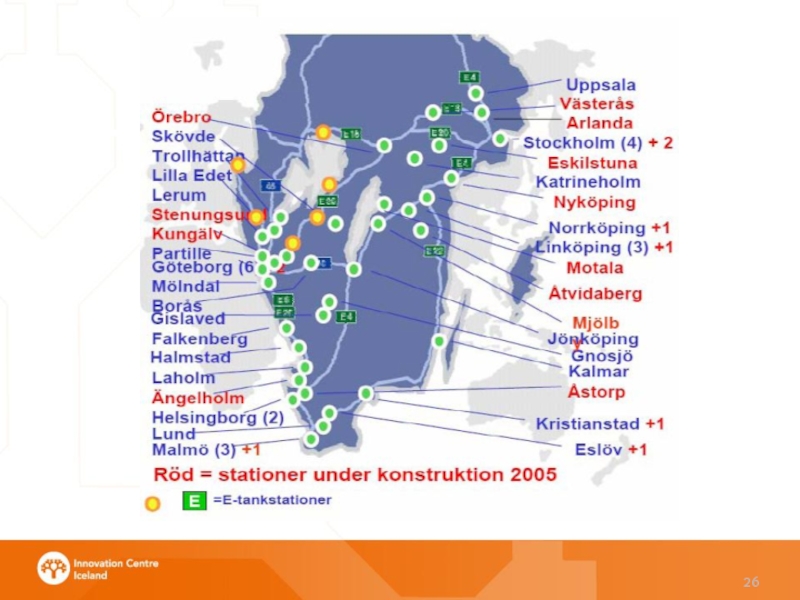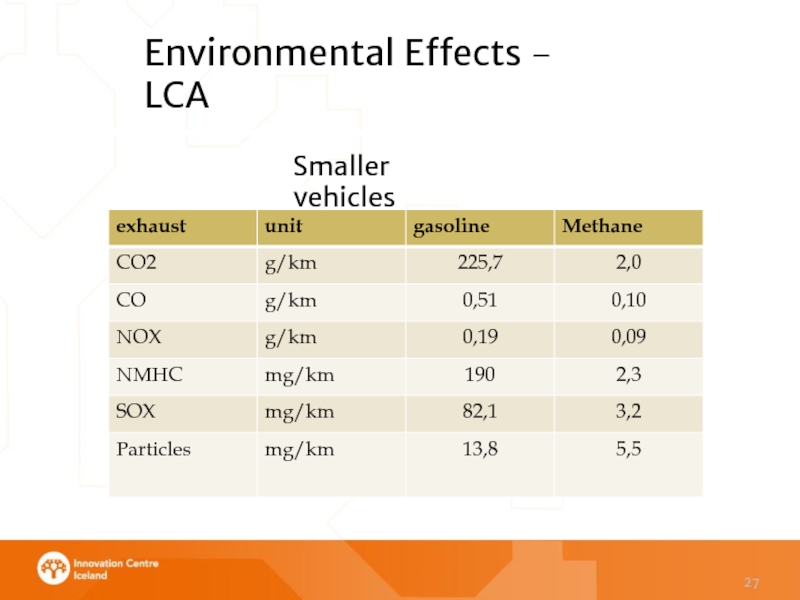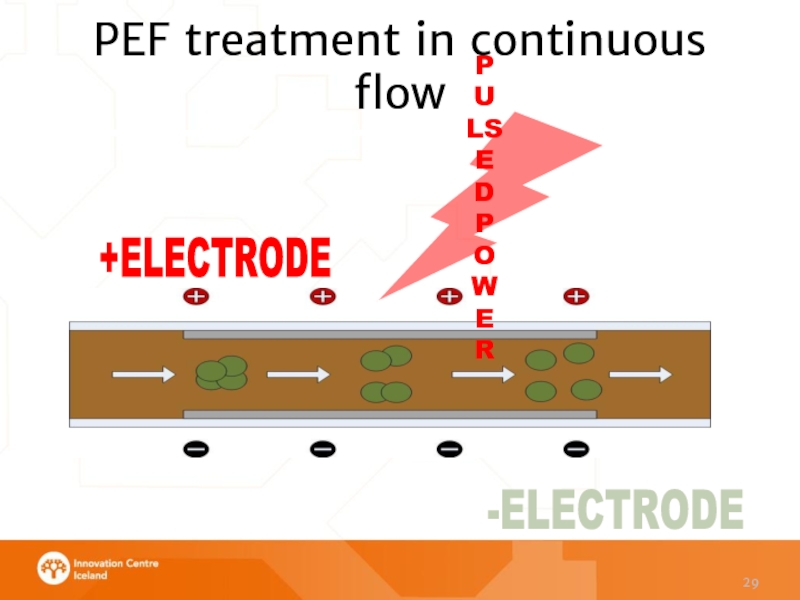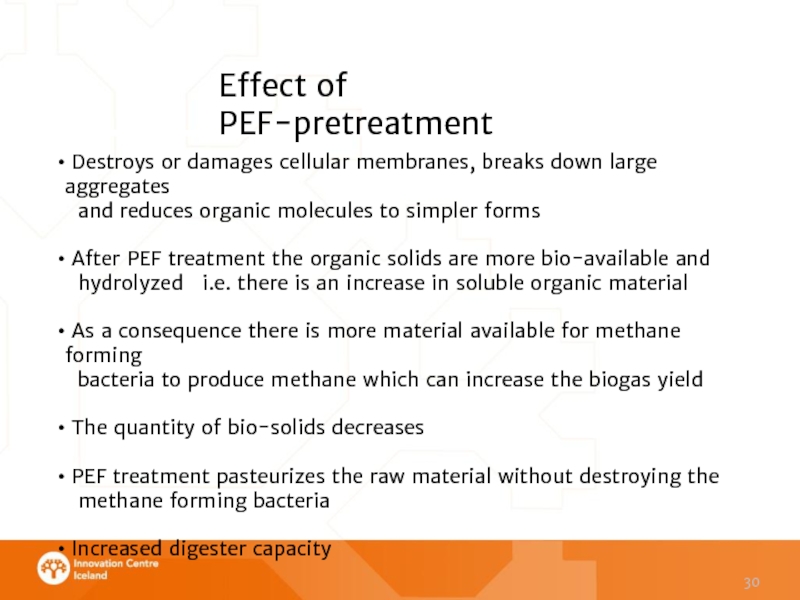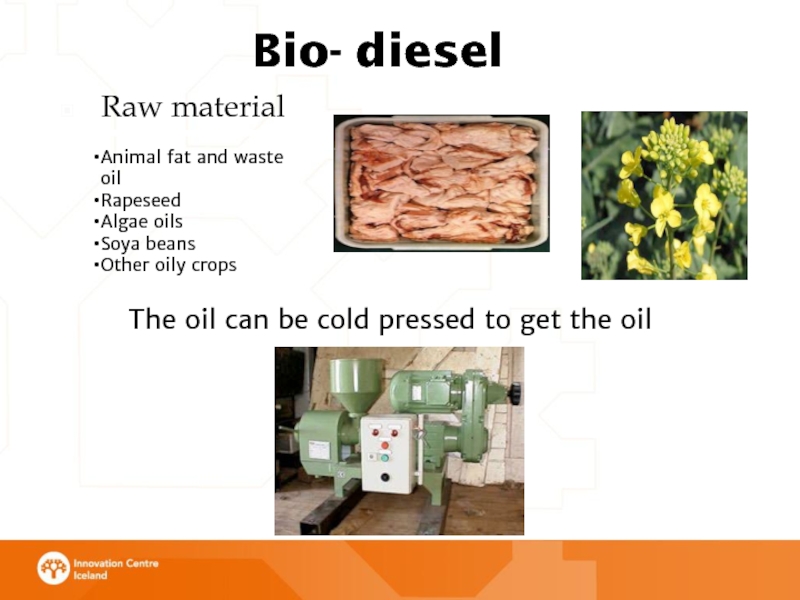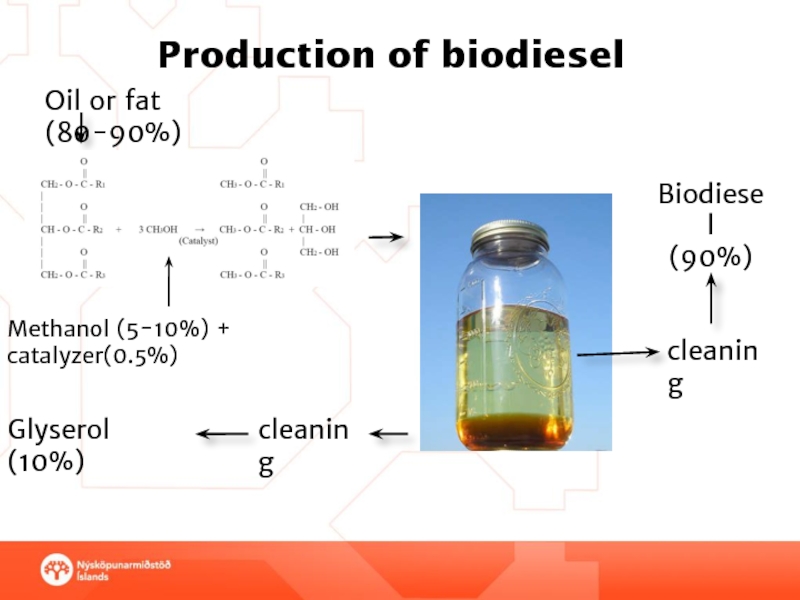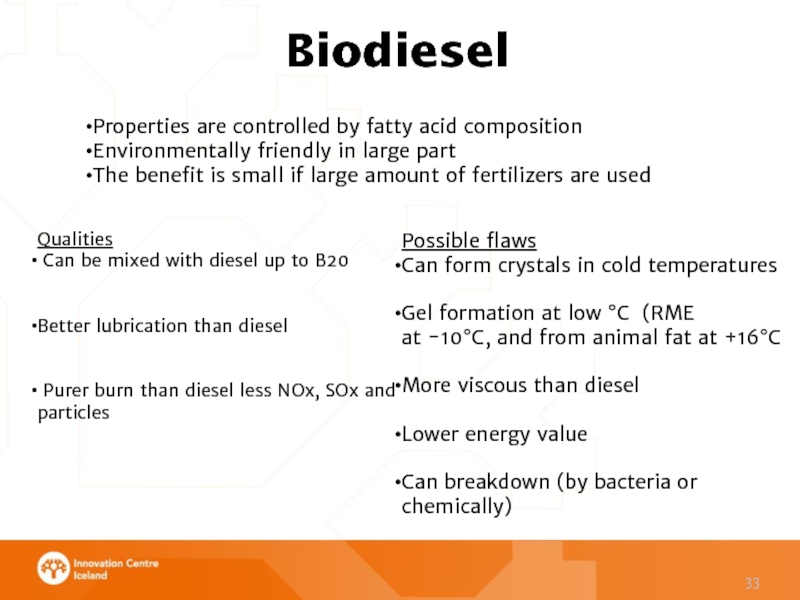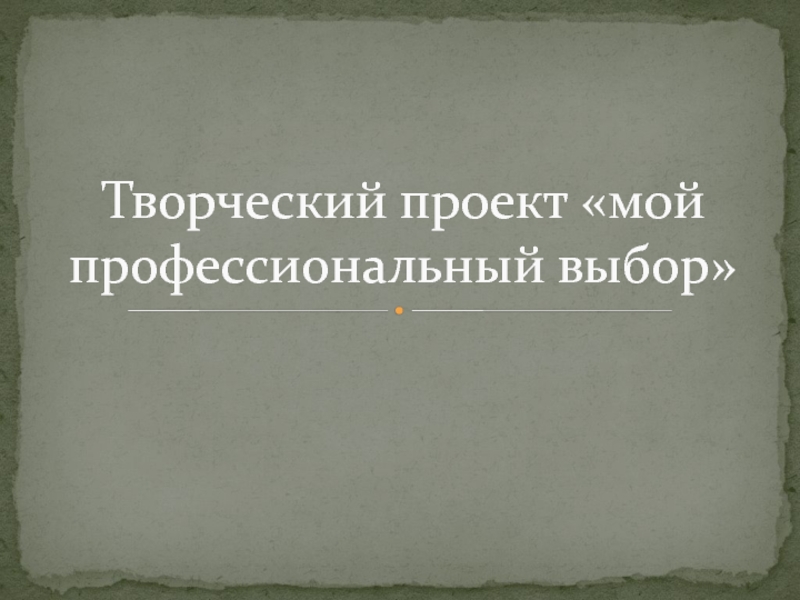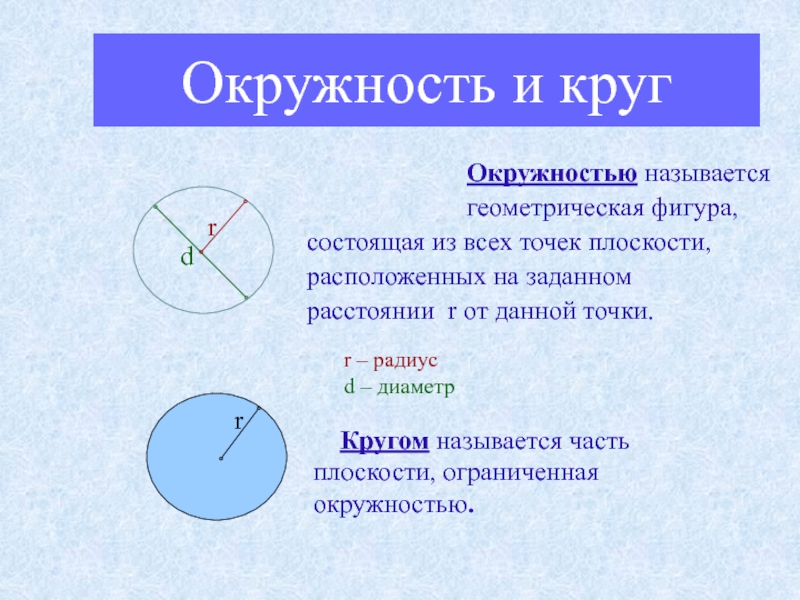Разделы презентаций
- Разное
- Английский язык
- Астрономия
- Алгебра
- Биология
- География
- Геометрия
- Детские презентации
- Информатика
- История
- Литература
- Математика
- Медицина
- Менеджмент
- Музыка
- МХК
- Немецкий язык
- ОБЖ
- Обществознание
- Окружающий мир
- Педагогика
- Русский язык
- Технология
- Физика
- Философия
- Химия
- Шаблоны, картинки для презентаций
- Экология
- Экономика
- Юриспруденция
1 Bioenergy - biofuels Magnús Guðmundsson Innovation Center of Iceland Magnús
Содержание
- 1. 1 Bioenergy - biofuels Magnús Guðmundsson Innovation Center of Iceland Magnús
- 2. Слайд 2
- 3. Bio-fuels- definitions Bio-fuels are made from sustainable
- 4. Types of bio-fuels
- 5. Ethanol fermentationYeasts are mostly used today to
- 6. 1°- and 2° generation productionLigno-cellulose plantsTreesAgricultural wasteGrass/helmStarchy
- 7. First and second generation ethanol(from Toefl TU
- 8. Bio-Ethanol Henry Ford started to use pure
- 9. Ethanol Production
- 10. Food versus fuels
- 11. MethaneAnaerobic digestion with many types of bacteriaProduced
- 12. Methane is produced by anaerobic digestion
- 13. Thank you for your attentionMethane from cellulose
- 14. How do anaerobic digesters (AD) work
- 15. Слайд 15
- 16. Слайд 16
- 17. Combination of waste– importance of C/N ratio•The
- 18. Methane production – how much? The
- 19. How much is used for energy
- 20. The aim of the EU is to
- 21. Cleaning of bio-gas
- 22. Landfill gas to methane It takes 20-40
- 23. Слайд 23
- 24. Слайд 24
- 25. Methane as a fuelCleanliness demands>96% purityMaximum
- 26. Слайд 26
- 27. Environmental Effects – LCASmaller vehicles
- 28. Mechanical – ultrasound and pressure Chemical
- 29. PEF treatment in continuous flow-ELECTRODE+ELECTRODEPULSED POWER
- 30. Destroys or damages cellular membranes, breaks
- 31. Bio- dieselAnimal fat and waste oilRapeseedAlgae oilsSoya
- 32. Production of biodieselBiodiesel(90%)Glyserol (10%)Methanol (5-10%) + catalyzer(0.5%)Oil or fat (80-90%)cleaningcleaning
- 33. BiodieselPossible flawsCan form crystals in cold temperaturesGel
- 34. Скачать презентанцию
Слайды и текст этой презентации
Слайд 1Bioenergy - biofuels
Magnús Guðmundsson
Innovation Center of Iceland
Magnús Guðmundsson
Innovation Center
of Iceland
Слайд 2
EU
Green package “20-20-20” climate targets/ambitions
EU targets affecting conventional
transport solutions: 20% RES by 2020 including 10% RES in transport sector
20% reduction of CO2 emission by 2020
European policy in the transport sector
Слайд 3Bio-fuels- definitions
Bio-fuels are made from sustainable raw materials, mainly
biomass, plant fat/oil and all kinds of organic waste from
agriculture, municipalities and industry. It is CO2 neutral!The use of bio-fuels are supposed to replace fossil fuels partially or totally leading to less pollution such as CO and dust.
Bio-fuels made with fermentation or chemical reactions are:
Bio-ethanol Bio-diesel Bio-gas (bio-methane)
Слайд 5Ethanol fermentation
Yeasts are mostly used today to ferment sugars to
ethanol: most common and can use many substrates
Also bacterias like
Zymomonas mobilis: higher ethanol tolerance but limited substrates (glucose, fructose)In some cases thermophilic bacteria is used
Thermophilic at 55°C are in use
Higher than 70°C is in development
Faster reactions but less tolerance
Слайд 61°- and 2° generation production
Ligno-cellulose plants
Trees
Agricultural waste
Grass/helm
Starchy plants
Maize
Barley/wheat
Other crops
Sugar rich
plants
Sugar cane
Sugar beets
Pretreatment
Hydrolysis
Fermentation
Distillation
Ethanol
1°- generation production
2° generation production
Byproducts:
Heat
chemicals
Слайд 7First and second generation ethanol
(from Toefl TU Berlin)
1° Generation production–
from starch and sugar canes
-Creating debate on food vs fuel
2°
Generation production– use of polysaccharides from lignocellose
More pretreatment
– separation of complex polymers
and reduce them to smaller
saccharides (sugars)
made with heat, chemicals and
enzymes.
Слайд 8Bio-Ethanol
Henry Ford started to use pure ethanol on “"Quadricycle" in
1896
USA produces more ethanol than Brasil
It is mainly produced from
maize (corn starch)First the starch is converted to sugars before it is fermented
USA production is more expensive than the production of Brazil
Слайд 11Methane
Anaerobic digestion with many types of bacteria
Produced from landfill gas
(buried waste) under uncontrolled
situations. Digestion time can be many
yearsProduced with anaerobic reactors under controlled situation.
Digestion time is 2-4 weeks
Слайд 12
Methane is produced by anaerobic digestion
•Methane forming bacteria need certain
conditions to thrive
-pH 6,4-7,2
- Temperature: Psycrophilic (0-20°C), mesophilic (30-35°C)
and thermophilic(> 55°C)- The ratio of C/N should be 25-30
- Moisture (> 65%)
The solid residue is a by-product
and a very good fertilizer
Organic matter
/ manure
Kolvetni
Prótein
fita
Acid forming
bacteria
Simple organic
acids
Acetic acid
Probionic acid
Succininic acid
Butyric acid
Formic acid
Methane forming
bacteria
Landfill and biogas
Methane 50-70%
CO2 25-50%
water
Ammoniac
H2S
Слайд 17Combination of waste– importance of C/N ratio
•The balance between carbon
and nitrogen is important as both are needed.
–Carbon rich waste:
paperboard (C/N=475), papers (C/N=600), garden waste(C/N=50), horsemanure (C/N=30) and other manure(C/N=25)–Nitrogen rich waste: slaughterhouse waste (C/N=3), fish waste (C/N=4) and pig manure(C/N=14)
•optimum ratio of C/N is from 25 to 30 so “right” waste needs to be mixed together
Слайд 18
Methane production – how much?
The gas production is different
from different kind of raw materials:
–Food waste: 200 m3/ton
–Paper: 300
m3/ton–Paperboard: 150 m3/ton
–Horse manure: 80 m3/ton
–Pig manure: 25 m3/ton
–Garden waste: 130 m3/ton
–Slaughter and fish waste: 180 m3/ton
The yield is though dependent on many other factors
Слайд 19
How much is used for energy production?
Manure
100 kg
87 kg
water
13 kg
solids
Matter
for biogas production
2kg ash
Volatile matter
11 kg
Efficiency of digesters
7
kgNot used
4 kg goes to landfill gas
2-3 Nm3/day
25 KWh/day
Слайд 20The aim of the EU is to have 10% of
the fuel as bio-fuel in (biodiesel, bio-gas, bio-ethanol) in 2020
Biogas
needs to be upgraded to bio-methane to be used for transportIf the same aim was set for Iceland it would mean that the production would be 30.000 t/year of methane
Methane – fuel for transport
Слайд 22Landfill gas to methane
It takes 20-40 years to produce landfill
gas from the waste
This is the gas cleaning station at
SorpaIt is cleaning about 1 million m3 of
Methane, enough for 1000 cars
The methane production can be increased by using anaerobic digesters which have retention time of 10-15 days
Слайд 25
Methane as a fuel
Cleanliness demands
>96% purity
Maximum 15mg/Nm3 water
Maximum 100 mg/Nm3
of H2S
N2 < 2%
No oxygen
No siloxane
No particles larger than 40
micronEnergy content of methane
39 MJ/m3 (1atm)
15 MJ/L (250 bar)
Слайд 28 Mechanical – ultrasound and pressure
Chemical – use of
alkali, acids and enzymes
Thermal – use of thermal hydrolysis
and microwaveElectrical – methods like PEF (Pulsed Electric Field)
Pretreatments of bio-waste for anaerobic digestion
Слайд 30 Destroys or damages cellular membranes, breaks down large aggregates
and reduces organic molecules to simpler forms
After
PEF treatment the organic solids are more bio-available and hydrolyzed i.e. there is an increase in soluble organic material
As a consequence there is more material available for methane forming
bacteria to produce methane which can increase the biogas yield
The quantity of bio-solids decreases
PEF treatment pasteurizes the raw material without destroying the
methane forming bacteria
Increased digester capacity
Effect of PEF-pretreatment
Слайд 31Bio- diesel
Animal fat and waste oil
Rapeseed
Algae oils
Soya beans
Other oily crops
Raw
material
The oil can be cold pressed to get the oil
Слайд 32Production of biodiesel
Biodiesel
(90%)
Glyserol (10%)
Methanol (5-10%) + catalyzer(0.5%)
Oil or fat (80-90%)
cleaning
cleaning
Слайд 33Biodiesel
Possible flaws
Can form crystals in cold temperatures
Gel formation at low
°C (RME
at -10°C, and from animal fat at +16°C
More viscous
than dieselLower energy value
Can breakdown (by bacteria or chemically)
Properties are controlled by fatty acid composition
Environmentally friendly in large part
The benefit is small if large amount of fertilizers are used
Qualities
Can be mixed with diesel up to B20
Better lubrication than diesel
Purer burn than diesel less NOx, SOx and particles
